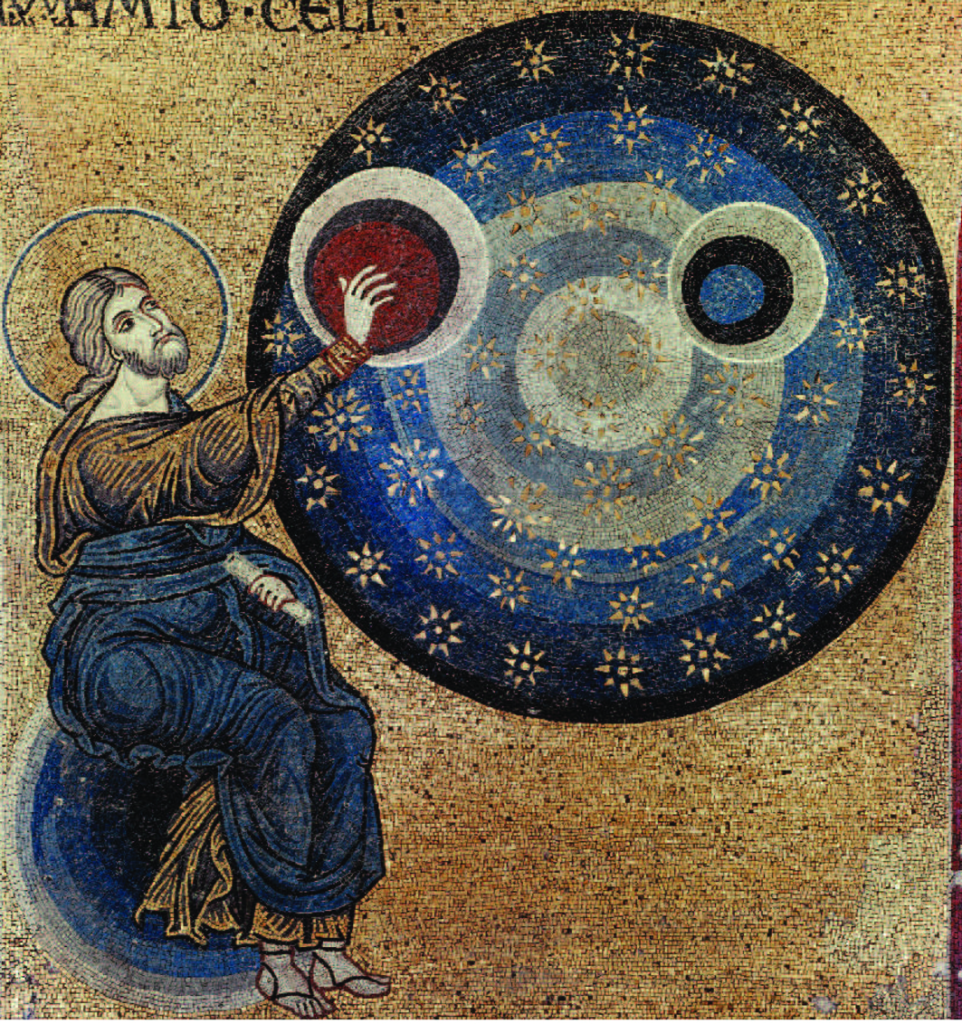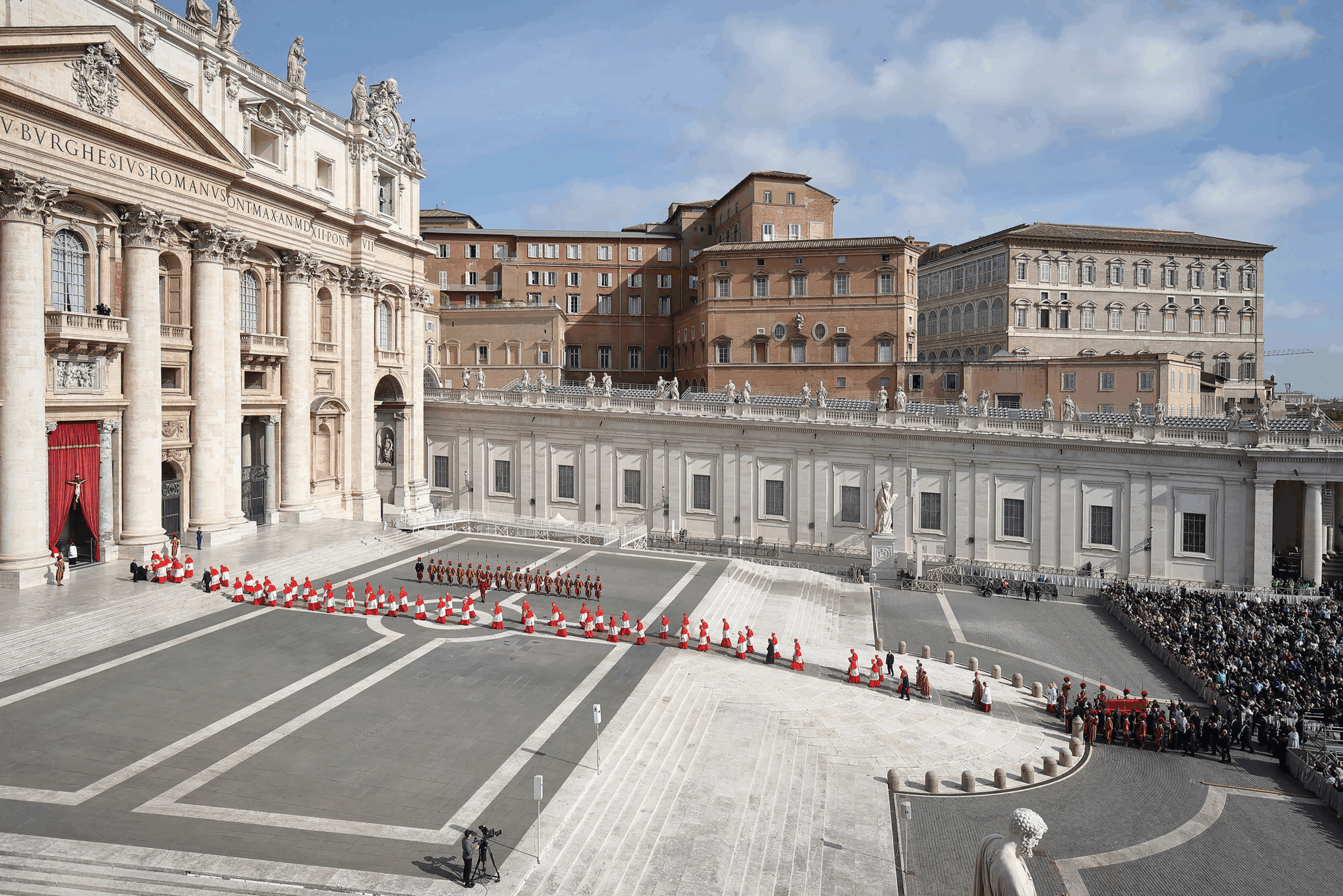By Robert Wiesner
“I Believe in One God, the Father, the Almighty, Maker of Heaven and Earth, of All that Is Seen and Unseen…”

Mosaic, detail from The Cycle of Creation, Monreale, New Cathedral of St. Mary, Italy
There are a number of intellectual and philosophical proofs for the existence of God; all of them, as valuable as they are for the apologetic arts, somewhat miss the point of the opening of our Creed. The existence of God is something of a given for a Christian. The astounding truth for Christian contemplation is that God, Existence Himself (or is it Themselves?) saw fit to extend existence to something other than God! The sheer exuberant joy of Being as opposed to non-being led to a veritable explosion of creative energy, resulting in visible and invisible realms lying outside divinity! Philosophers explain that everything that exists participates by grace in Divine Existence, not in a pantheistic synthesis, but as carrying a bit of divine spark. All things, from the most magnificent galaxy to the merest grain of sand, or the most glorious angel, exist only due to the expression of Divine Thought, Word and Spirit, as related in the opening verses of Genesis.
The first difference in the Creeds of 325 and 381 occurs in the first statement of the Creed. The Fathers of 381 expanded the wording of the first article to include the words “of heaven and earth” to emphasize the point that God is indeed the origin of all that exists. The words may have been added as a direct reference to the opening words of Scripture, but the issue remains mysterious, since a great deal of the documentation from that era has been lost. In any event, the addition simply underscores the origin of both matter and spirit: God is the Author of all that exists.
The icon in one sense is looking forward to a later section of the Creed, since it depicts Christ rather than attempting an image of the Father bringing all things into being. Any image purporting to be the Father is strictly forbidden by the canons of iconography. If justification for this image is sought, the prologue to the Gospel of John would suffice: “In the beginning was the Word, and the Word was with God, and the Word was God. He was in the beginning with God. All things were made through Him, and without Him nothing was made that was made.” Further explanation may be found in the first three verses of Genesis, which makes clear that the undivided Trinity, Father, Son (Word), and Holy Spirit, brought all things into existence: “In the beginning God made heaven and earth. The earth was invisible and unfinished; and darkness was over the deep. The Spirit of God was hovering over the face of the water. Then God said, ‘Let there be light,’ and there was light.”
The early Fathers of the Church neatly put together a formula which brought as much human theological clarity as possible to creation: the Father made heaven and earth through the Son and in the Holy Spirit. The first chapter of Genesis emphasizes the majestic creative power of God; a mere uttering of the Word suffices to bring all things into being. Creation culminates in the creation of human beings and the giving of commands from on high.
Chapter Two of Genesis seems a far more personal affair, with God fashioning humanity as a direct handiwork, making a sort of mud pie, into which He breathes His own Spirit and brings it to life, calling it Adam.
Thus, creation reveals the two aspects of God that humanity must recognize: the majestic Almighty creating by verbal thunderbolts, and the very personal God Who does not shrink from creating by direct contact with His creatures.






Facebook Comments